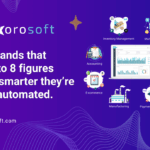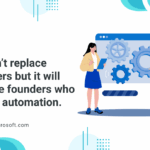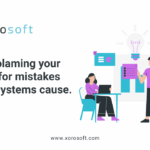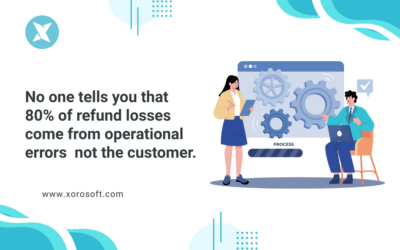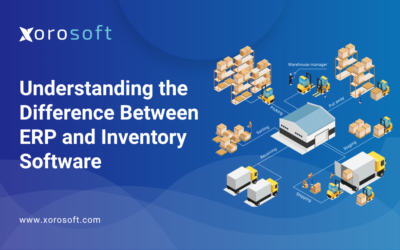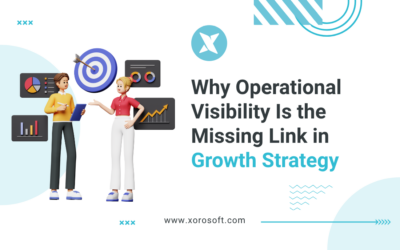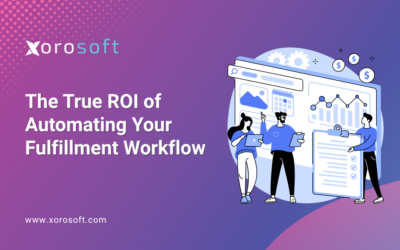
Introduction to ERP Systems
In today’s fast-paced business landscape, the need for efficient and integrated systems has become paramount. As we navigate the digital age, the role of Enterprise Resource Planning (ERP) systems in streamlining and modernizing business operations has become increasingly crucial. ERP systems are comprehensive software solutions designed to manage and automate various aspects of an organization, from finance and accounting to inventory management and supply chain logistics.
In this article, we will explore the transformative potential of ERP systems and how they can help businesses like yours transition from paper-based processes to a more efficient, digital-driven approach. We’ll delve into the key benefits of implementing an ERP solution, the role it plays in enhancing critical business functions, and the considerations to keep in mind when selecting and implementing an ERP system.
Understanding the Benefits of Implementing an ERP Solution
The implementation of an ERP system can unlock a myriad of benefits for businesses across industries. Here are some of the key advantages that an ERP system can offer:
- Improved Data Accuracy and Accessibility: ERP systems centralize data from various departments, ensuring a single source of truth. This eliminates the risk of data silos and inconsistencies, enabling better decision-making and real-time visibility into business performance.
- Enhanced Operational Efficiency: By automating and streamlining core business processes, ERP systems help organizations reduce manual tasks, minimize errors, and increase overall productivity. This translates to cost savings and improved resource allocation.
- Streamlined Inventory Management: ERP systems provide robust inventory tracking and control capabilities, helping businesses maintain optimal stock levels, reduce waste, and improve supply chain efficiency.
- Strengthened Financial Management: ERP solutions integrate financial data from across the organization, enabling better financial planning, forecasting, and reporting. This enhances financial decision-making and compliance.
- Improved Collaboration and Visibility: ERP systems facilitate cross-departmental collaboration by providing a unified platform for information sharing and workflow management. This promotes transparency and alignment throughout the organization.
- Scalability and Adaptability: Modern ERP systems are designed to grow and adapt with your business, ensuring that your technology infrastructure can keep pace with your evolving needs and industry changes.
Streamlining Business Operations with an ERP System
One of the primary benefits of an ERP system is its ability to streamline and optimize business operations across various functions. Let’s explore how an ERP solution can transform the way your organization operates:
The Role of an ERP System in Inventory Management
Effective inventory management is crucial for businesses to maintain the right balance of stock, minimize waste, and ensure timely delivery to customers. An ERP system can play a pivotal role in this process by:
- Providing real-time visibility into inventory levels, stock movements, and supply chain data
- Automating inventory replenishment based on predefined reorder points and demand forecasts
- Enabling efficient warehouse management, including item tracking, location optimization, and automated picking and packing
- Integrating with supplier systems to streamline procurement and reduce stockouts
By leveraging the inventory management capabilities of an ERP system, businesses can enhance their operational efficiency, reduce inventory-related costs, and improve customer satisfaction.
Enhancing Financial Management with an ERP Solution
Financial management is a critical aspect of any business, and an ERP system can significantly enhance this function by:
- Automating and integrating financial processes: ERP systems consolidate data from various sources, such as accounts payable, accounts receivable, and general ledger, into a centralized system. This eliminates the need for manual data entry and reconciliation, reducing the risk of errors and improving financial reporting accuracy.
- Enabling advanced financial planning and analysis: ERP solutions provide robust financial planning and forecasting capabilities, empowering finance teams to make informed decisions based on real-time data and historical trends. This includes features like budgeting, cash flow management, and financial modeling.
- Ensuring regulatory compliance: ERP systems can help organizations maintain compliance with relevant financial regulations, tax laws, and industry-specific requirements through features like automated tax calculations, audit trails, and financial reporting.
- Improving financial visibility and decision-making: With a comprehensive view of financial data across the organization, ERP systems enable finance teams to generate detailed reports, analyze key performance indicators, and make data-driven decisions to optimize financial performance.
By integrating financial management into the ERP ecosystem, businesses can enhance their financial control, reduce administrative overhead, and make more informed strategic decisions.
Introducing Xorosoft ERP: Features and Advantages
At the forefront of ERP solutions, Xorosoft ERP offers a comprehensive and innovative platform to transform your business operations. Xorosoft ERP is designed to address the unique challenges faced by organizations of all sizes, providing a seamless and intuitive user experience.
Some of the key features and advantages of Xorosoft ERP include:
- Modular and Scalable Architecture: Xorosoft ERP is built on a modular design, allowing you to customize and scale the solution to meet your specific business requirements. This ensures that your ERP system can grow alongside your organization.
- Integrated Business Processes: Xorosoft ERP seamlessly integrates various business functions, including finance, accounting, inventory management, supply chain, and customer relationship management. This holistic approach promotes cross-departmental collaboration and data-driven decision-making.
- Advanced Reporting and Analytics: Xorosoft ERP offers robust reporting and analytics capabilities, enabling you to generate comprehensive reports, visualize key performance indicators, and gain valuable insights to drive informed business decisions.
- Mobility and Remote Access: With Xorosoft ERP’s mobile-friendly design and cloud-based deployment options, your team can access critical business information and perform tasks anytime, anywhere, ensuring continuous productivity and collaboration.
- Improved Data Security and Compliance: Xorosoft ERP prioritizes data security and compliance, with features like user access controls, data encryption, and audit trails to protect your sensitive information and maintain regulatory compliance.
- Seamless Integration with Third-Party Applications: Xorosoft ERP offers a robust integration framework, allowing you to connect with other essential business tools and systems, such as CRM, e-commerce platforms, and industry-specific software, for a truly integrated business ecosystem.
By leveraging the power of Xorosoft ERP, your organization can streamline operations, enhance financial management, improve inventory control, and drive overall business efficiency and growth.
Key Considerations When Selecting an ERP System
Choosing the right ERP system for your business is a critical decision that can have a significant impact on your organization’s long-term success. When evaluating ERP solutions, it’s essential to consider the following key factors:
- Business Requirements and Scalability: Carefully assess your current and future business needs, including the size of your organization, industry-specific requirements, and growth aspirations. Ensure the ERP system you select can accommodate your evolving requirements and scale with your business.
- Functional Capabilities: Evaluate the ERP system’s ability to address your core business functions, such as finance, inventory management, supply chain, and customer relationship management. Ensure the solution offers the necessary features and integrations to streamline your operations.
- Ease of Use and User Experience: Consider the ERP system’s user-friendliness, intuitive interface, and overall user experience. This can significantly impact user adoption and the overall efficiency of your business processes.
- Implementation and Integration: Assess the ERP vendor’s implementation methodology, project management capabilities, and the system’s integration with your existing IT infrastructure and third-party applications.
- Data Security and Compliance: Ensure the ERP system you choose prioritizes data security, with features like role-based access controls, data encryption, and comprehensive backup and disaster recovery capabilities. Additionally, verify the system’s compliance with relevant industry regulations and standards.
- Vendor Reputation and Support: Research the ERP vendor’s market reputation, financial stability, and the quality of their customer support. A reliable and responsive vendor can greatly contribute to the success of your ERP implementation and ongoing system maintenance.
- Total Cost of Ownership (TCO): Consider the ERP system’s licensing fees, implementation costs, ongoing maintenance, and any additional hardware or infrastructure requirements. Evaluate the long-term TCO to ensure the solution aligns with your budget and financial objectives.
By carefully evaluating these key considerations, you can make an informed decision and select an ERP system that best fits your business needs and sets the stage for a successful digital transformation.
Implementing an ERP System: Best Practices and Challenges
Implementing an ERP system is a complex and multifaceted process that requires careful planning and execution. To ensure a smooth and successful implementation, it’s crucial to follow best practices and address potential challenges:
Best Practices for ERP Implementation
- Establish a Dedicated Project Team: Assemble a cross-functional team of stakeholders, including representatives from IT, finance, operations, and other key departments, to oversee the implementation process.
- Clearly Define Project Scope and Objectives: Clearly articulate the goals, expected outcomes, and key performance indicators for the ERP implementation to ensure alignment across the organization.
- Conduct a Thorough Business Process Analysis: Thoroughly review and document your current business processes to identify areas for improvement and ensure the ERP system is configured to support your unique operational requirements.
- Develop a Comprehensive Change Management Plan: Recognize that the implementation of an ERP system can significantly impact your organization’s people, processes, and culture. Develop a robust change management plan to address resistance and ensure user adoption.
- Provide Comprehensive Training and Support: Invest in comprehensive training programs to equip your employees with the necessary skills and knowledge to effectively utilize the ERP system. Ongoing support and resources are also crucial for long-term user adoption.
- Prioritize Data Migration and Integrity: Ensure the accurate and complete migration of your existing data to the new ERP system, as data integrity is crucial for the system’s effectiveness and decision-making.
- Continuously Monitor and Optimize: Regularly review the ERP system’s performance, identify areas for improvement, and make necessary adjustments to optimize the system’s efficiency and alignment with your evolving business needs.
Addressing Common Challenges in ERP Implementation
- Resistance to Change: Employees may be apprehensive about the transition to a new ERP system, leading to resistance and potential adoption issues. Effective change management strategies are essential to address this challenge.
- Data Migration Complexities: Migrating and integrating data from legacy systems into the new ERP system can be a complex and time-consuming process, requiring careful planning and execution.
- Budget and Resource Constraints: ERP implementations can be resource-intensive, both in terms of financial and human capital. Careful budgeting and resource allocation are crucial to ensure a successful implementation.
- Lack of Executive Sponsorship: Without strong leadership and commitment from the executive team, the ERP implementation may face challenges in securing the necessary resources, buy-in, and organizational support.
- Customization Overload: While some level of customization may be necessary to align the ERP system with your unique business requirements, excessive customization can increase the complexity, cost, and maintenance of the system.
- Inadequate User Training: Insufficient user training and support can hinder the effective adoption and utilization of the ERP system, undermining the overall benefits of the implementation.
By addressing these best practices and challenges, organizations can increase the likelihood of a successful ERP implementation and reap the full benefits of a streamlined, digitized business ecosystem.
Integrating an ERP System with Existing Business Processes
Seamless integration between an ERP system and your existing business processes is crucial for maximizing the system’s effectiveness and achieving a successful digital transformation. Here are some key considerations for integrating an ERP system:
- Assess Current Business Processes: Conduct a thorough review of your current business processes, identifying areas where the ERP system can streamline and optimize operations. This will help ensure a smooth integration and minimize disruptions to your day-to-day activities.
- Align ERP Functionality with Business Needs: Carefully map the capabilities of the ERP system to your specific business requirements, ensuring that the system can seamlessly integrate with and support your existing workflows and operations.
- Prioritize Data Integration and Standardization: Establish a comprehensive data integration strategy to ensure the smooth transfer of information between the ERP system and your other business applications. This may involve data cleansing, standardization, and the implementation of data governance policies.
- Develop Comprehensive Integration Strategies: Collaborate with your ERP vendor to develop a robust integration strategy that addresses the specific needs of your organization. This may include the use of application programming interfaces (APIs), middleware, or custom integrations.
- Implement Robust Change Management Processes: Recognize that the integration of an ERP system will inevitably impact your organization’s people, processes, and culture. Develop a comprehensive change management plan to facilitate user adoption, address resistance, and ensure a smooth transition.
- Continuously Monitor and Optimize: Regularly review the performance of the integrated ERP system, identify areas for improvement, and make necessary adjustments to ensure the system remains aligned with your evolving business requirements.
By carefully integrating the ERP system with your existing business processes, you can unlock the full potential of your digital transformation, drive operational efficiency, and position your organization for long-term success.
The Future of ERP Systems: Trends and Innovations
As the business landscape continues to evolve, the future of ERP systems is poised to bring forth exciting advancements and innovations. Here are some emerging trends and developments that are shaping the future of ERP:
- Cloud-Based ERP: The shift towards cloud-based ERP solutions is gaining momentum, offering increased scalability, flexibility, and reduced IT infrastructure requirements. Cloud-based ERP systems also enable remote access, improved data security, and seamless software updates.
- Artificial Intelligence and Machine Learning: The integration of AI and ML capabilities within ERP systems is transforming the way businesses make decisions and optimize operations. These technologies can enhance forecasting, automate routine tasks, and provide intelligent insights to drive strategic decision-making.
- Internet of Things (IoT) Integration: The convergence of ERP systems and IoT devices is enabling real-time data collection, asset monitoring, and predictive maintenance, leading to enhanced supply chain visibility and operational efficiency.
- Mobility and Collaborative Platforms: ERP systems are evolving to offer mobile-friendly interfaces and collaborative features, empowering employees to access critical business information and perform tasks on-the-go, fostering increased productivity and cross-functional collaboration.
- Blockchain Integration: The integration of blockchain technology within ERP systems can enhance data security, transparency, and traceability, particularly in industries with complex supply chains and regulatory requirements.
- Personalization and Customization: ERP vendors are increasingly focusing on providing highly customizable and personalized solutions, allowing organizations to tailor the system to their unique business needs and user preferences.
- Predictive Analytics and Business Intelligence: Advanced analytics and business intelligence capabilities within ERP systems are enabling organizations to make more informed, data-driven decisions, optimize resource allocation, and anticipate future trends and challenges.
As these trends and innovations continue to shape the ERP landscape, businesses that embrace the evolving capabilities of ERP systems will be well-positioned to drive digital transformation, enhance operational efficiency, and maintain a competitive edge in the years to come.
Conclusion: Taking the Leap Towards Digital Transformation with Xorosoft ERP
In the ever-evolving business world, the transition from paper-based processes to a digital, ERP-driven ecosystem has become a strategic imperative for organizations seeking to remain competitive and agile. By implementing a comprehensive ERP solution like Xorosoft ERP, businesses can unlock a world of benefits, from streamlined operations and enhanced financial management to improved inventory control and data-driven decision-making.
The journey towards digital transformation with Xorosoft ERP may seem daunting, but with the right approach, mindset, and support, your organization can navigate this transition seamlessly and reap the rewards of a more efficient, integrated, and future-ready business ecosystem.
As you embark on this transformative path, I encourage you to explore the capabilities of Xorosoft ERP and how it can revolutionize your business processes. Take the first step towards a more streamlined, data-driven, and digitally-empowered future by booking a demo with our team today.
